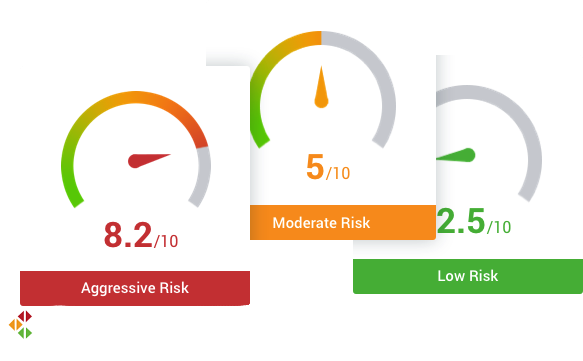Send us a message with your questions.
The S&P 500 Index closed on Monday June 13th more than 20% below its most recent high value, which is the generally agreed upon definition of a bear market for U.S. stocks. It is important to note that this does not mark the beginning of the bear market, rather it confirms that the drawdown in stocks that started at the beginning of this year has been a bear market all along. The last high in the S&P was on January 4th, so the official start of this bear market is January 5th.
In the lead up to this year, markets were euphoric with the S&P averaging 26% for the last 3 years. Some investors forgot about the importance of risk management or were using inadequate risk management to prevent the losses caused by this year’s sharp market downturn.
Over the past several years, we have had some very volatile days but not all volatility is created equal. Market volatility is a measure of the frequency and magnitude of price changes in both down and up directions. Upside volatility boosts portfolio growth while downside volatility can derail investment plans.
It stands to reason that any hedging strategy should seek to avoid downside volatility while not necessarily limiting upside volatility. While we “care” about both upside and downside volatility, we only are concerned with reducing the downside volatility of our portfolios. The risk of loss matters much more to investors than the risk associated with volatility. Therefore, when we talk about risk management, we use value at risk and drawdown measures more extensively than volatility.
Value at risk is the measure of possible financial loss in a portfolio over a specific time frame and drawdown is the peak-to-trough decline in the value of a portfolio. Drawdown is what investors experience and would like to avoid – it is a measure of how much their portfolio has lost since the previous high value. When drawdown becomes too great, investors abandon their investment plan in an effort to prevent further losses. Typically, this panic selling is done at a time when it’s too late – the damage to their portfolio has already been done and now they are reducing their chances for recovery.
With the knowledge that investors care more about value at risk and drawdown than they do volatility, we developed strategies that incorporate disciplined risk management to achieve downside protection that we believe works best for clients.
Prior to 2022, nobody knew when the next significant market event would occur or when there would be a spike in volatility. Our core belief is that portfolios should always carry some form of built-in downside protection. Many investors and Advisors wait to add downside protection and hedges while a market event is occurring – this is like buying insurance when your house is on fire; it will cost too much, and it is in place too late to be helpful.
At MSCM, we utilize tactical strategies that seek to minimize downside risk while capturing as much of the market upside as possible. Compared to common strategic allocations (e.g., a 60/40 stock & bond portfolio), we have lower annualized volatility and a low correlation to equities (even negative during bear markets), but most importantly, our strategies have lower value at risk and lower drawdowns, making for a much smoother investment path for clients. For example, our strategies have been largely defensive since January 2022, allowing our strategies to massively outperform the S&P 500 and traditional 60/40 portfolios.
Our implementation is simple. We analyze the market data and use investment rules to decide if we should be invested in equity ETFs. When that answer is “No”, we are willing to go fully defensive into cash, U.S. Treasuries, and gold. In 2020, our strategies also largely avoided the COVID bear market by exiting our equity positions when the market sold off in late February, and then re-allocating to equities when the market environment improved in early April. Our results can be found here: Our Strategies - McElhenny Sheffield Capital Management.
Long-term use of tactical allocations has become our best portfolio hedge. It’s almost too obvious to state but we'll state it anyway, every bear market starts first as a correction, and every correction starts first as a 5% pullback. During times of increased market volatility, allocations to tactical strategies like ours are best positioned for when the eventual bear market occurs, while still delivering returns if the bull market continues.
